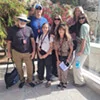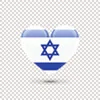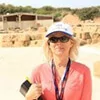General Information
The State of Israel has some 9.7 million inhabitants. The most prominent characteristic of Israel’s population is its high diversity. Besides the main division of the country’s inhabitants into Jews (80%) and Arabs (20%), there are many more subdivisions. The Jews, for example, are divided into religious and secular, while the latter include various immigrant communities who preserve their culture. Likewise, the Arabs are divided into Muslims, Christians and Druze. Alongside these groups, Israel has additional small ethnic religious groups such as the Circassians and the Samaritans, and small Christian communities from Europe such as the German Beit El community in Zikhron Ya’akov.
Another major characteristic of the Israeli population is its rapid growth rate, which is atypical of developed countries. Since the establishment of the State, the population of Israel has increased almost tenfold, mainly due to the immigration of Jews from around the world. Today, Israel is a densely populated country, even though large regions are thinly populated. The population of Israel is young (the median age is 30.5 years), its infant mortality rate is low (3.55 deaths for each 1,000 births), and the life expectancy is high (83.5 years).
The Dead Sea
The Dead Sea is the lowest point on earth, at 1,315 feet below sea level at its lowest point. That’s more than 4 football fields, end-to-end.
Technology
Israel’s greatest commodity is its ingenuity. Israel is only 2nd to Silicone Valley for the amount of tech start-ups. On average, there are about 3000 at any given time.
Israeli Religions
History
The State of Israel was created in the Land of Israel which was promised to the Hebrew slaves who Moses led out of Egypt, as told in the book of Exodus. It had been promised to them since the days of Abraham, Isaac and Jacob (Exodus 6:8).
According to the book of Joshua, Israel was established after Canaan was defeated by the Israelites, starting with the city of Jericho, in which the army circled the city for seven days and then blew their horns as God instructed.
For some time, Israel was made up of 12 tribes during the period of Judges, eventually asking God for a king, which led to the anointing and rule of Saul. His reign was short-lived, being conquered by King David (father of and predecessor to King Solomon, builder of the first Temple), whom Jesus was a descendent of.
Jesus Christ’s entire life and ministry took place in Israel, having been born in Bethlehem, raised in Nazareth and being crucified and raised from the dead in Jerusalem.
Israel went through many wars and turnovers of power throughout its history, falling to various other nations including the Philistines, Assyrians and Romans, ultimately leading to the diaspora, when Jews were scattered around the earth.
Eventually, Jewish people began to return to the land that was Israel in the 1800’s and continued to do so, eventually leading to the establishment of the Jewish state, Modern-day Israel, in 1949, led by David Ben-Gurion.
For a more detailed history, expand the different time periods below.
Official Languages
Hebrew and Arabic
Israel’s official languages are Hebrew and Arabic. English is the main language for purposes of external relations. Most Israelis speak English, and most of the signposts are also in English.
The most common language in Israel is Hebrew, which is spoken by six million people. This is followed by Arabic, which is spoken by over a million people. Since Israel is a land of immigration, additional languages are spoken among the various immigrant communities, the major languages being Russian (some 900,000 speakers), Jewish-Arabic (300,000 speakers) and Yiddish (200,000 speakers).












